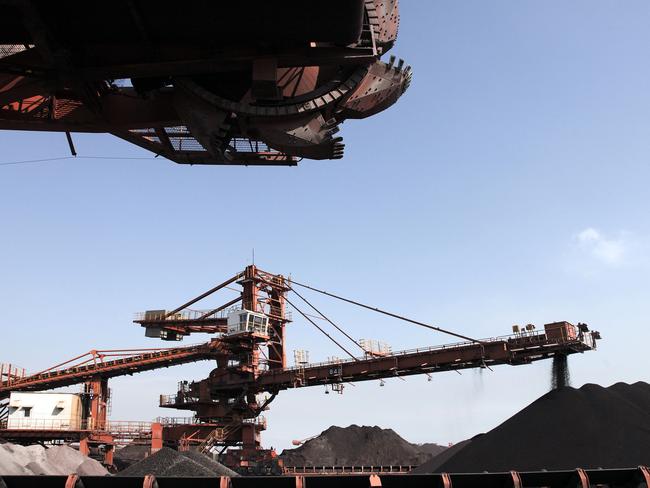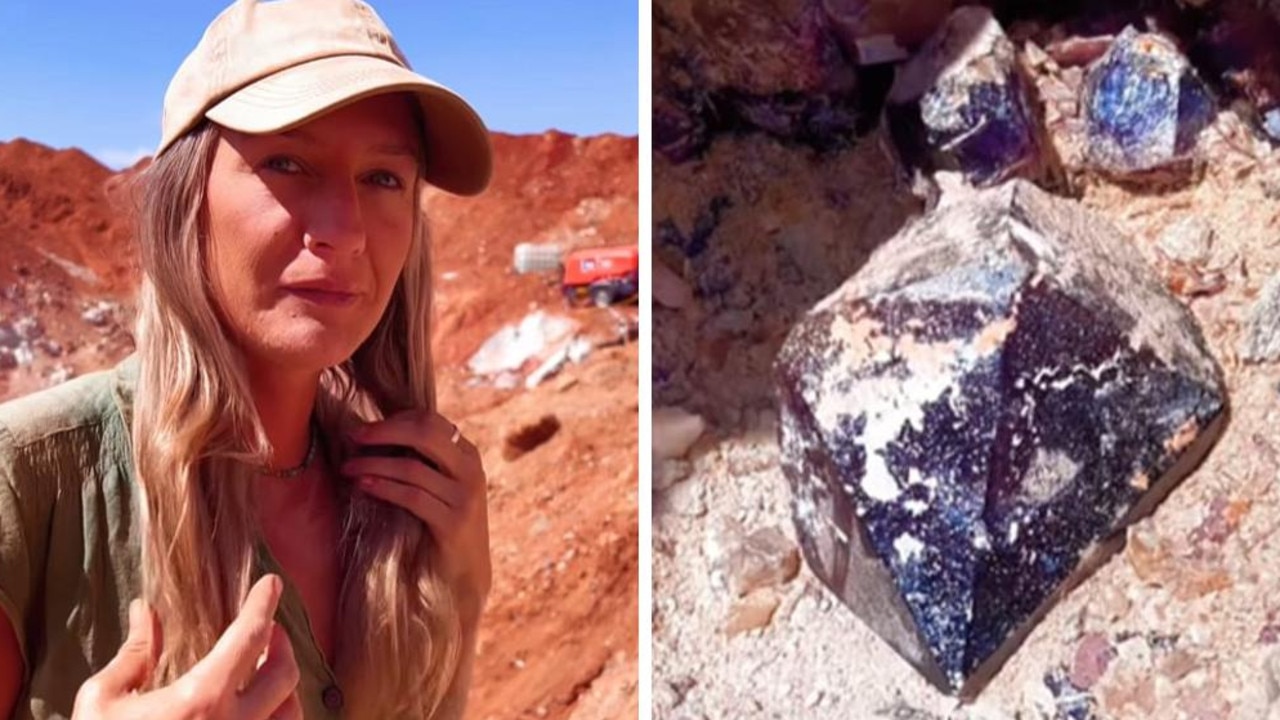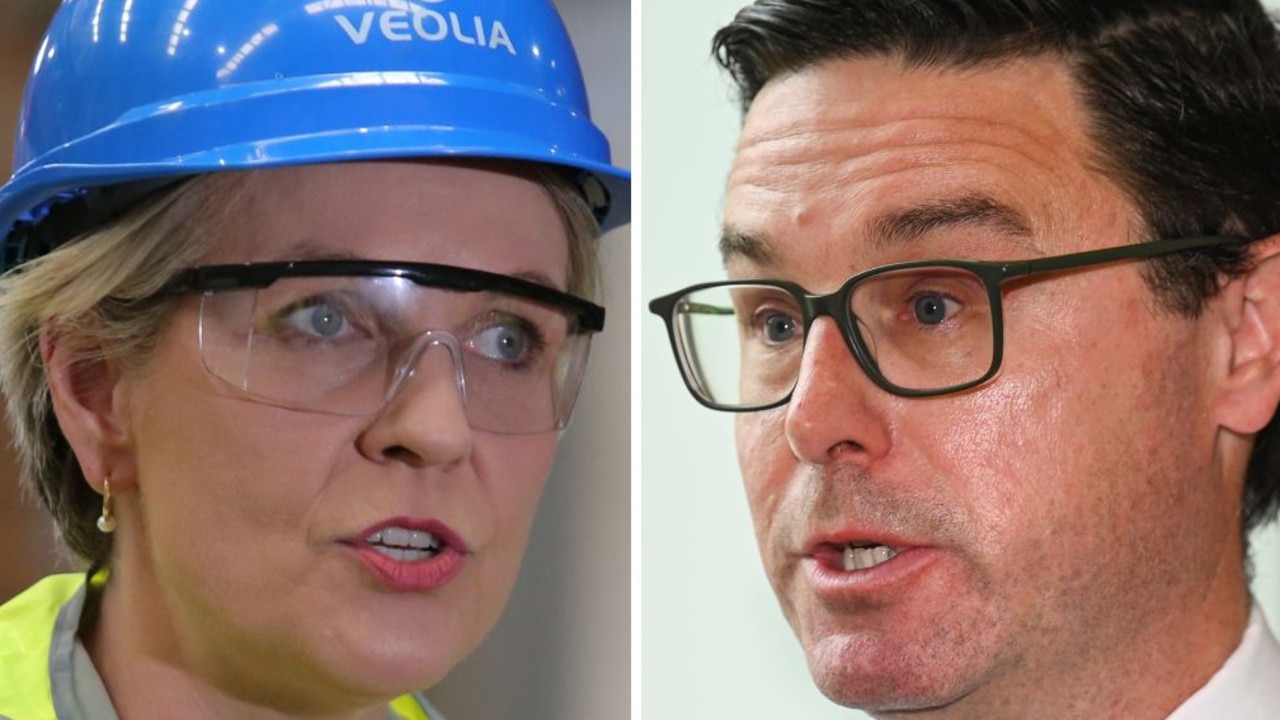Australia’s iron ore prices have surged to a new high – but there’s bad news around the corner
As iron ore continues to pile up at China’s ports despite falling demands, is Australia’s iron export bubble about to burst?

Mining
Don't miss out on the headlines from Mining. Followed categories will be added to My News.
Soaring stockpiles. Falling demand. Yet, against all expectations, iron ore prices somehow managed to reach a new three-month high this week.
Analysts ask: When will it peak?
Investors continue to bet on the hope that fresh Beijing government moves to prop up China’s collapsed property market will inject new life into stalled construction projects.
As with previous failed stimulus attempts, that would spike demand for bulk structural steel.
But China’s ports already hold enormous reserves (147.4 million tons) of its key ingredient, iron ore, along with growing stockpiles of aluminium, copper, cobalt, zinc and rare earth minerals.
Exactly what for is the subject of much speculation.

But is there really room for more iron ore?
Traders on China’s Dalian Commodity Exchange (DCE) think so.
This week, futures trading reached US$127.22 a tonne after China’s central bank announced that it would inject US$138 billion into the property sector, ease mortgage down payment requirements and lower interest rates.
The Chinese Communist Party (CCP) controlled body also said provincial governments – which helped produce the crisis by allowing speculative land deals – had been instructed to buy back “some” apartment complexes left incomplete due to a lack of developer financial liquidity.
Is this the stimulus saviour markets have been anticipating all year?
Up? Down? Around and around?

This week, American multinational investment bank Morgan Stanley told the Mining Journal that “a fresh look at the steelmaking material” suggests “gloomy price forecasts” are overstated.
However, Macquarie Group Head of Commodities Strategy Marcus Garvey expects iron ore prices to plummet within three to five years.
“You’ve actually had a period of about 18 months where global industrial production growth went sideways,” Garvey told the Singapore Iron Ore Forum earlier this month.
“Thinking about this year, we are seeing global goods demand start to improve again. And that should mean that we get a pick-up in global industrial production, which will be beneficial for industrial commodities as a whole, very much including the ferrous sector.”
But this demand is unlikely to make a severe dent in existing – and pending – supplies.
“Trend demand growth, while not negative, is going to be low unless we find some currently unforeseen element to really pick up the baton for steel consumption,” he notes. “And we are after a period of relatively limited supply growth, facing a multi-year period where supply growth actually is going to pick up quite heavily.”
And he adds that uneven global stockpiles – combined with India’s push into iron ore production – produce a mounting risk of severe oversupply.
“When supply is the dominant driver of market pricing, (that) is generally when you get a true supply shock. From a pricing perspective (for 2026-27) … in our view, is probably sort of $80 real.”

Chinese whispers
While Macquarie believes that the growing exports of steel-consuming goods out of China are insufficient to sustain current iron ore production levels, Goldman Sachs assesses that its property market also has little room for improvement.
It estimates there were some 391 million square metres worth of unoccupied new housing for sale across that country between January and April – up 24 per cent on the same time last year.
But some 96 per cent of Chinese families already own a home. And that leaves analysts wondering how long it will take for the housing backlog to ease enough to prompt the highly anticipated demand for new construction. Or if it will have any real impact on the state of China’s property crises whatsoever.

The CCP-controlled Global Times news service has taken offence at this.
“Some commentators who are unaware of the actual situation in China have smeared the Chinese economy, exaggerated the challenges it faces, and claimed that China’s housing rescue is too small to end the crisis. These groundless allegations should be condemned,” a Monday editorial insists.
“As China marches toward becoming a great modern socialist country, policymakers have stressed that economic reforms should focus on both finding new growth engines and protecting social fairness and justice.”
Jamie Seidel is a freelance writer | @JamieSeidel
Originally published as Australia’s iron ore prices have surged to a new high – but there’s bad news around the corner





